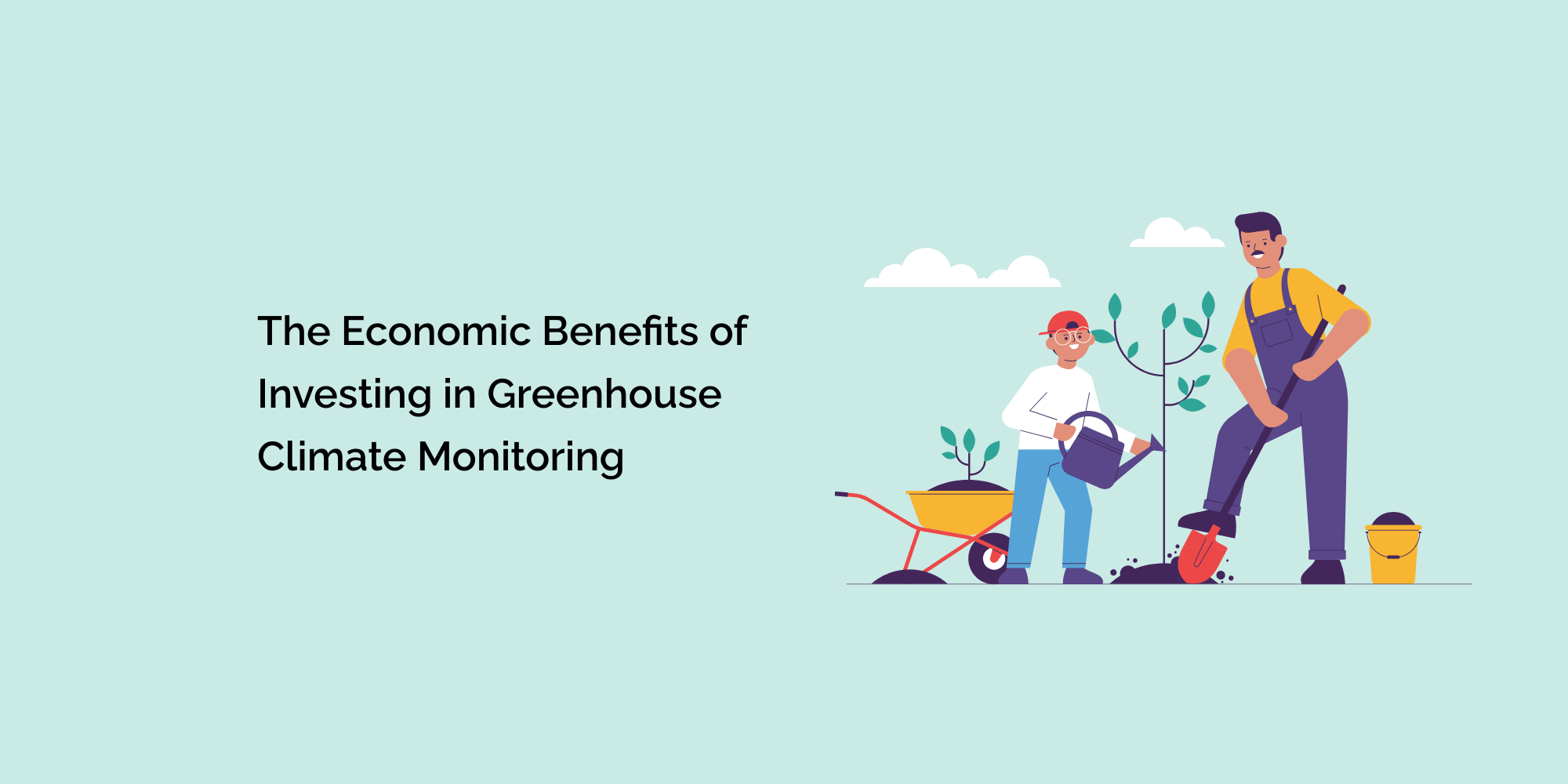Greenhouse farming has become a crucial component of modern agriculture, enabling year-round production of various crops. While the initial investment in greenhouse infrastructure can be substantial, investing in climate monitoring systems is equally essential.
In this blog, we'll explore the economic benefits of incorporating greenhouse climate monitoring, showcasing how it can lead to cost savings, increased yields, and overall profitability.
1. Precise Resource Management
a. Water Efficiency:
- Greenhouse climate monitoring helps optimize irrigation systems by providing real-time data on soil moisture levels. This prevents overwatering, reducing water costs significantly.
b. Energy Savings:
- Monitoring systems can regulate heating, cooling, and ventilation equipment more efficiently, leading to reduced energy consumption and lower utility bills.
2. Enhanced Crop Quality and Yields
a. Optimal Growth Conditions:
- Climate monitoring ensures that temperature, humidity, and light levels remain within the ideal range for plant growth, resulting in healthier, faster-growing crops with higher yields.
b. Disease and Pest Management:
- Early detection of environmental conditions conducive to pests and diseases allows for timely intervention, minimizing crop losses and the need for costly treatments.
3. Reduced Crop Losses
a. Extreme Weather Preparedness:
- Climate monitoring systems can provide advanced warning of extreme weather events, allowing for protective measures such as shading or temperature adjustments to safeguard crops.
b. Early Detection of Issues:
- Monitoring can quickly identify problems like heating or cooling system failures, preventing prolonged exposure to unfavorable conditions that can damage crops.
4. Labor Savings
a. Automation:
- Automated systems can handle tasks like temperature regulation, irrigation, and ventilation, reducing the need for manual labor and the associated costs.
b. Remote Monitoring:
- Greenhouse managers can monitor conditions and make adjustments remotely, minimizing the need for on-site staff.
5. Data-Driven Decision Making
a. Predictive Analysis:
- Climate monitoring systems can collect and analyze data over time, enabling growers to make informed decisions about planting times, crop rotations, and resource allocation.
b. Inventory Management:
- Accurate climate data helps optimize inventory management, reducing waste due to overproduction or spoilage.
6. Competitive Edge
a. Consistency:
- By consistently providing optimal conditions for crops, greenhouse operators can meet market demands more reliably, enhancing their reputation and customer trust.
b. Diverse Crop Selection:
- Precise climate control allows for the cultivation of a wider variety of crops, potentially tapping into niche markets and commanding higher prices.
7. Regulatory Compliance
a. Meeting Standards:
- Climate monitoring can help ensure compliance with quality and safety standards, reducing the risk of product rejection and associated financial losses.
b. Record-Keeping:
- Accurate records of climate conditions and treatments can be valuable for audits and certification processes.
Conclusion
Investing in greenhouse climate monitoring isn't just a technological upgrade; it's a smart economic decision. By optimizing resource usage, improving crop quality and yields, reducing losses, and enhancing decision-making capabilities, greenhouse climate monitoring systems pay for themselves over time.
In an industry where precision and efficiency matter, these systems are a pathway to increased profitability and sustainability.
Gardeners who harness the power of data-driven climate control are not only protecting their investments but also ensuring a fruitful and prosperous future in greenhouse farming.








